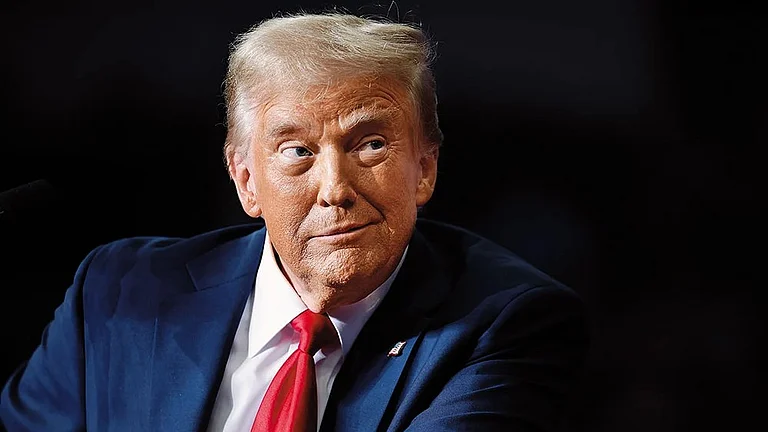New Delhi’s ₹7,300-crore Production-Linked Incentive scheme for rare earth minerals faces challenges due to China’s tightened export controls on rare earths and processing equipment.
China dominates global rare earth supply giving it leverage over strategic sectors like EVs, electronics, wind turbines, and industrial machinery.
India struggles with high-cost, cutting-edge processing technology and equipment, slowing domestic rare earth extraction and manufacturing of critical components.
Japan’s response to China’s 2010 rare earth export restrictions by diversifying suppliers, investing in tech, and forging international partnerships, offers policy lessons for New Delhi
India’s PLI Scheme for Rare Earth Minerals Pivots Amid New Challenges
While direct imports of advanced processing equipment from Japan or Germany may not be cost-efficient, India could explore technology-sharing collaborations and joint ventures to bridge its technology gap, enhance innovation, and mitigate long-term supply chain risks
India’s ambitious ₹7,300-crore Production-Linked Incentive (PLI) scheme to promote domestic extraction of rare earth minerals is undergoing a strategic pivot as new challenges emerge. The scheme, designed to reduce India’s dependency on China, has encountered hurdles after Beijing tightened its rare earth mineral and magnet exports earlier this month.
India’s biggest challenge lies in accessing the cutting-edge technology and high-precision equipment required to process these raw materials and manufacture components essential for high-tech industries.
Earlier this month, the Expenditure Finance Committee approved the incentive scheme, which aims to provide both capital and operational expenditure support to entities establishing rare earth magnet processing units and domestic supply chains. The scheme allocates ₹6,500 crore for capital expenditure and ₹800 crore for operational expenditure. It is scheduled for Cabinet approval shortly, according to reports.
China holds a near-monopoly in the global rare earth supply chain, accounting for about 61% of global production and nearly 92% of processing. Rare earth magnets are critical components in electric vehicles, electronics, wind turbines, and industrial machinery. In response to mounting trade tensions with the US, China has leveraged its dominance in rare earth minerals as a strategic tool.
China’s Extended Restrictions on REM and Extraction Equipment
According to industry experts cited by The Economic Times, technology and equipment required for processing rare earth minerals are far costlier when sourced from outside China, posing a setback to India’s efforts to strengthen domestic production and self-reliance.
“China’s commerce ministry has issued a notification extending export controls to rare earth production and processing equipment, as well as to raw and auxiliary materials,” ET reported, quoting an industry expert. “This may impact the new scheme the Centre has announced to incentivise local manufacturing of rare earth magnets.”
As per an announcement by China’s Bureau of Security and Control, export restrictions now cover not only permanent magnets but also rare-earth production and processing equipment. Exporters of these items must first apply for a licence and indicate whether they are “dual-use controlled,” meaning the items have both civilian and military applications.
New Delhi’s Challenges Echo Tokyo’s 2010 REM Crisis
This isn’t the first time China has leveraged its near-monopoly on the global rare earth supply. In 2010, Japan, then almost entirely dependent on China for rare earths, faced a sudden export halt from Beijing following a territorial dispute. The move exposed Tokyo’s heavy reliance on Chinese supplies.
Japan responded with a well-planned strategy, allocating a supplemental budget to stabilise prices and mitigate the crisis. A crucial aspect of Japan’s response was the diversification of its rare earth supply sources. Tokyo actively expanded its supplier base through bilateral and multilateral partnerships with countries holding untapped rare earth reserves. It also encouraged investment in mining projects and signed international agreements, particularly with Australia.
Just last week, Australia announced its readiness to collaborate with countries to address rare earth supply chain disruptions. Over the past decade, Australia has emerged as a key alternative supplier for nations such as Japan, Myanmar, and Vietnam.
At a time when China continues to weaponise its rare earth mineral advantage, India can draw lessons from Japan’s experience by strengthening strategic partnerships with Australia, the European Union, and other like-minded nations.
While direct imports of advanced processing equipment from Japan or Germany may not be cost-efficient, India could explore technology-sharing collaborations and joint ventures to bridge its technology gap, enhance innovation, and mitigate long-term supply chain risks.
